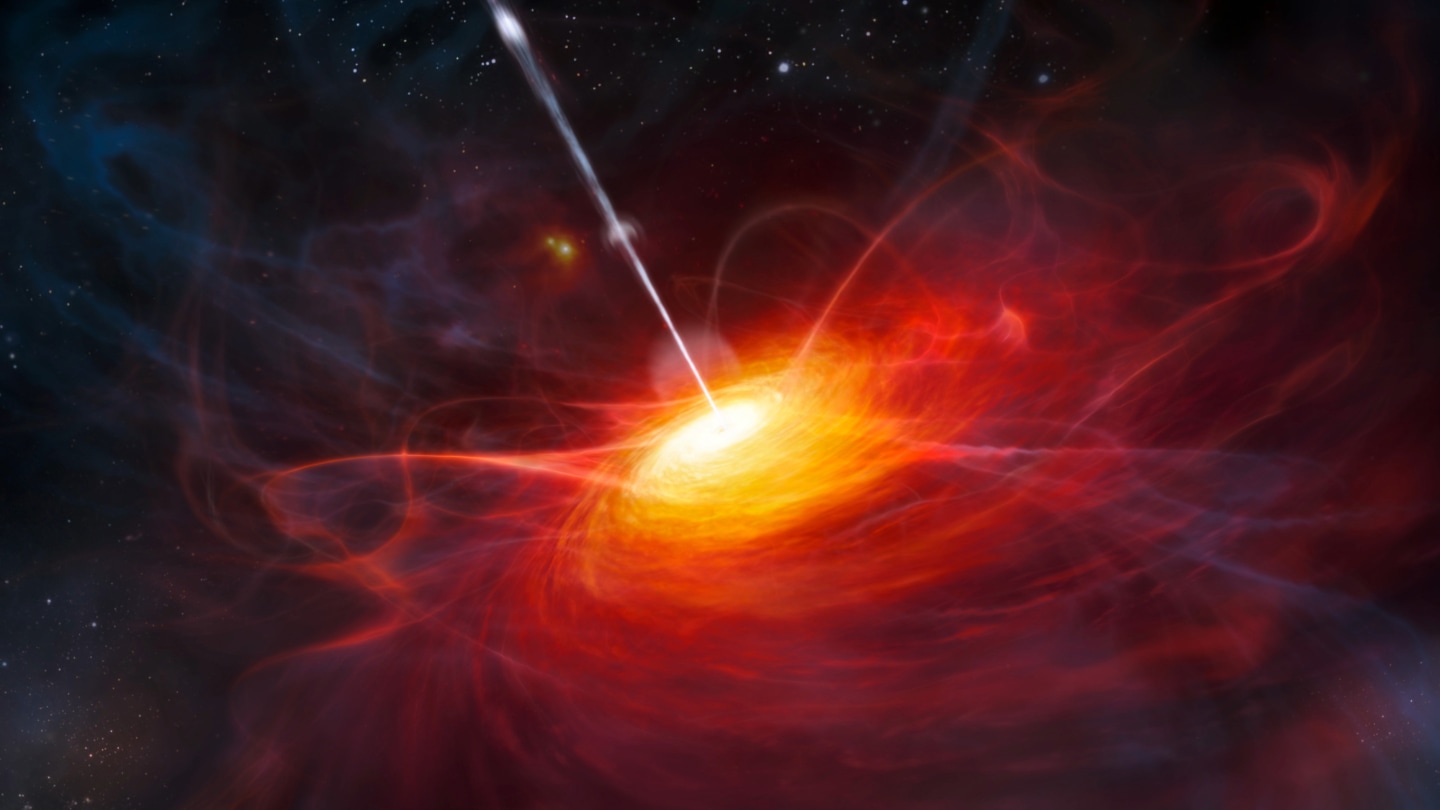A distant quasar’s black hole is oddly huge for its galaxy

The first-ever sighting of starlight from a galaxy hosting one of the most distant quasars known has revealed an astronomical oddity.
Quasars — blazingly bright galactic cores — owe their brilliance to the intense heat that results as gas whirls around a big black hole. The black hole powering a quasar 13 billion light-years from Earth is half as massive as all the stars around it — a record high ratio for a quasar host galaxy, astronomers report in a paper submitted October 14 to arXiv.org.
All previous attempts to glimpse the host galaxy with the Hubble Space Telescope failed. So astronomers took aim with the James Webb Space Telescope, or JWST, instead (SN: 6/20/23).
The quasar, named ULAS J1120+0641 and the fourth farthest known, outshines its galaxy more than 100 times over (SN: 6/29/11). “This makes it very hard to measure the [light] from the host galaxy,” says team member Minghao Yue, an astronomer at MIT. But during the 13 billion years that the quasar’s light has sped toward us, the universe’s expansion has stretched the light waves by more than 700 percent. Thus, we see the quasar’s visible light at infrared wavelengths, where JWST conducts most of its observations.
The black hole powering the quasar, the astronomers find, is 1.4 billion times as massive as the sun, in line with previous estimates. What’s new is the detection of the host galaxy, whose stars add up to 2.6 billion solar masses. That’s small compared with the Milky Way, whose stellar mass is some 60 billion solar masses. But at the time we see the quasar, about 750 million years after the Big Bang, all galaxies were young, and even most of the largest galaxies had fewer stars than modern giants like our own.
What really jumps out is the relative heft of the black hole: It weighs in at 54 percent of its galaxy’s stellar mass, versus only about 0.1 percent for central black holes in modern giant galaxies. “That means the coevolution between black holes and their hosts in the early universe must be very different” from modern galaxies, Yue says.
Harvard University astronomer Avi Loeb agrees. He thinks the quasar’s radiation has suppressed star formation in the host galaxy by heating its gas (SN: 8/16/24). To collapse and create stars, interstellar gas must be frigid; otherwise, the outward push of thermal pressure prevents the gas from collapsing into new stars. “If I had to guess,” he says, “the gas is not cold enough to make a lot of stars.”
The quasar will shut off in its future, Loeb says. Then the gas in the surrounding galaxy can cool and make stars, growing the galaxy’s stellar mass. If we could see the galaxy as it is today, its black hole mass relative to its stellar mass might very well match that of giant galaxies near us.
Unfortunately, Yue says, the new work doesn’t address the mystery of how these huge black holes grew so big so soon after the Big Bang (SN: 1/18/21). But the observations do show another galaxy colliding with the one hosting the quasar. The collision probably spills gas into the black hole, boosting its already considerable mass and also lighting up the quasar so that astronomers can see it across such a vast distance.
Source link

